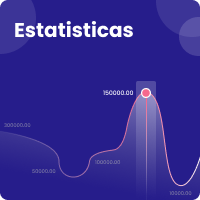Revisão de diferentes perspectivas geoespaciais para a identificação e mitigação de potenciais ameaças à segurança para plataformas de satélite
DOI:
https://doi.org/10.18667/cienciaypoderaereo.704Palavras-chave:
satélites, cibersegurança, tecnologia geoespacial, aprendizagem automática, observação terrestreResumo
A infraestrutura de satélite desempenha um papel vital no mundo moderno. Cada vez mais sistemas dependem dessa tecnologia, o que a tornou um alvo para ameaças à segurança. A existência desses riscos potenciais é reconhecida internacionalmente, por isso cada vez mais recursos estão sendo alocados para estudar e compreender essas ameaças. Diante desse cenário, o estudo das tecnologias de satélites de uma perspectiva geoespacial permite compreender a consciência situacional do ecossistema tecnológico e suas potencialidades, limitações e vulnerabilidades. Novas tecnologias como inteligência artificial, aprendizado de máquina e blockchain devem ser estudadas para gerar contramedidas de segurança para tecnologias de satélites.
Downloads
Referências
Chen, K. S. (2016). Principles of synthetic aperture radar imaging: A system simulation approach. CRC Press. https://doi.org/10.1201/b19057
Chuvieco, E. (1990). Fundamentos de teledetección espacial. Ediciones Rialp.
Copernicus.(2021).Copernicusservices.https://www.copernicus.eu/en
CubeSat. (2018, March 20). CubeSat. http://www.cubesat.org/
Fritz, J. (2013). Satellite hacking: A guide for the perplexed. Culture Mandala, 10(1), 5906.
Geospatial Media Communications. (2017). Global geospatial industry report. Geospatial Media Communications.
Hackasat. (2020). Home. https://www.hackasat.com
Humphreys, T. E., Ledvina, B. M., Psiaki, M. L., O'Hanlon, B. W., & Kintner, P. M. (2008). Assessing the spoofing threat: Development of a portable GPS civilian spoofer. Proceedings of the 21st International Technical Meeting of the Satellite Division of The Institute of Navigation. Institute of Navigation. http://www.ion.org/publications/abstract.cfm?jp=p&articleID=8132
Iacobellis, M., Amodio, A., & Drimaco, D. (2020). Cyber-security threats to space missions and countermeasures to ad- dress them. 71st International Astronautical Congress (IAC) - The CyberSpace Edition, IAC-20-E9.2.D5.4.
ISIS Space. (2020, September 13). ISIS CubeSat development platform. ISIS Space. https://www.isispace.nl/product/isiscubesat-development-platform/
Kleos Space. (2021). Delivering RF reconnaissance data-as-a- service. Kleos Space. https://kleos.space/
Korean Aerospace Research Institute [KARI]. (2021). Korea Multi-Purpose Satellite (KOMPSAT, Arirang). KARI. https://www.kari.re.kr/eng/sub03_02_01.do
Kothari, V., Liberis, E., & Lane, N. D. (2020). The final fron- tier: Deep learning in space. ArXiv:2001.10362. http://arxiv.org/abs/2001.10362
Malik, W. J. (2019, July 26). Attack vectors in orbit the need for IoT and satellite security [Conference session]. RSA Conference 2019, San Francisco, CA, USA. http://www.rsaconference.com/industry-topics/presentation/attack-vectors-in-orbit-the-need-for-iot-and-satel- lite-security
Manning, J., Langerman, D., Ramesh, B., Gretok, E., Wilson, C., George, A., MacKinnon, J., & Crum, G. (2018). Machine-learning space applications on smallsat platforms with TensorFlow. 32nd Annual AIAA/USU Conference on Small Satellites. https://digitalcommons.usu.edu/smallsat/2018/all2018/458
Planet. (2021). Homepage. https://www.planet.com/
Radio Amateur Satellite Corporation [AMSAT]. Home. (2020). AMSAT. https://www.amsat.org/
Richards, J. A. (2009). The imaging radar system. In J. A. Richards (Ed.), Remote Sensing with Imaging Radar (pp. 1-10). Springer. https://doi.org/10.1007/978-3-642-02020-9_1
Roundtable on Sustainable Palm Oil [RSPO]. (2021). Home. https://rspo.org/
SatNOGS. (2020, September). SatNOGS. https://satnogs.org/
The CubeSat Simulator Project Page. (2020). Home. http://www.cubesatsim.org/
Tullis, P. (2019, December 1). GPS is easy to hack, and the U.S. has no backup. Scientific American. https://www. scientificamerican.com/article/gps-is-easy-to-hack- and-the-u-s-has-no-backup/

Downloads
Publicado
Edição
Seção
Licença
Copyright (c) 2021 Escuela de Postgrados de la Fuerza Aérea Colombiana

Este trabalho está licenciado sob uma licença Creative Commons Attribution 4.0 International License.
Declaração de cessão de direitos autorais à revista
O autor cede exclusivamente à Revista os direitos de exploração (reprodução, distribuição, comunicação pública e transformação) para explorar e comercializar a obra, no todo ou em parte, em todos os formatos e modalidades de exploração presentes ou futuros, em todas as línguas, por todo o período de vida da obra e pelo mundo inteiro.
Todo o conteúdo publicado na revista científica Ciencia y Poder Aéreo está sujeito à licença de reconhecimento internacional Creative Commons 4.0, cujo texto completo pode ser encontrado em http://creativecommons.org/licenses/by/4.0/
A licença permite que qualquer usuário baixe, imprima, extraia, arquive, distribua e comunique publicamente este artigo, desde que seja dado o devido crédito aos autores: ao(s) autor(es) do texto e a Ciencia y Poder Aéreo, Revista da Escola de Pós-Graduação da Força Aérea Colombiana. Exceto quando for indicado o contrário, o conteúdo deste site será licenciado sob uma licença Creative Commons Attribution 4.0 Internacional.
Para usos de conteúdo não previstos nestas normas de publicação é necessário entrar em contato diretamente com o diretor ou editor da revista através do e-mail cienciaypoderaereo1@gmail.com
A Escola de Pós-Graduação da Força Aérea Colombiana e esta revista não são responsáveis pelos conceitos expressos nos artigos, nem pelos metadados fornecidos ou pelas afiliações que os autores declarem, sendo assim de inteira responsabilidade dos autores.

Licença Creative Commons
Os autores concedem à revista os direitos de exploração (reprodução, distribuição, comunicação pública e transformação) para explorar e comercializar a obra, inteira ou parcialmente, em todos os formatos e modalidades de exploração presentes ou futuras, em todas as línguas, por todo o período de vida da obra e no mundo inteiro.
Todos os conteúdos publicados na revista científica Ciencia y Poder Aéreo estão sujeitos à licença de reconhecimento 4.0 4.0 Internacional de Creative Commons, cujo texto completo pode-se consultar em http://creativecommons.org/licenses/by/4.0/
A licença permite a qualquer usuário baixar, imprimir, extrair, arquivar, distribuir e comunicar publicamente um artigo, desde que seja dado crédito aos autores do trabalho: aos autores do texto e a Ciencia y Poder Aéreo, Revista Científica da Escola de Pós-Graduação da Força Aérea Colombiana. Salvo onde for indicado o contrário, o conteúdo deste site é licenciado sob uma licença Creative Commons Atribución 4.0 internacional.
Para usos de conteúdo não previstos nestas normas de publicação é necessário entrar em contato diretamente com o diretor ou editor da revista através do e-mail cienciaypoderaereo1@gmail.com
A Escola de Pós-Graduação da Força Aérea Colombiana e esta revista não são responsáveis pelos conceitos expressos nos artigos, nem pelos metadados fornecidos ou pelas afiliações que os autores declarem, sendo assim de inteira responsabilidade dos autores.




















